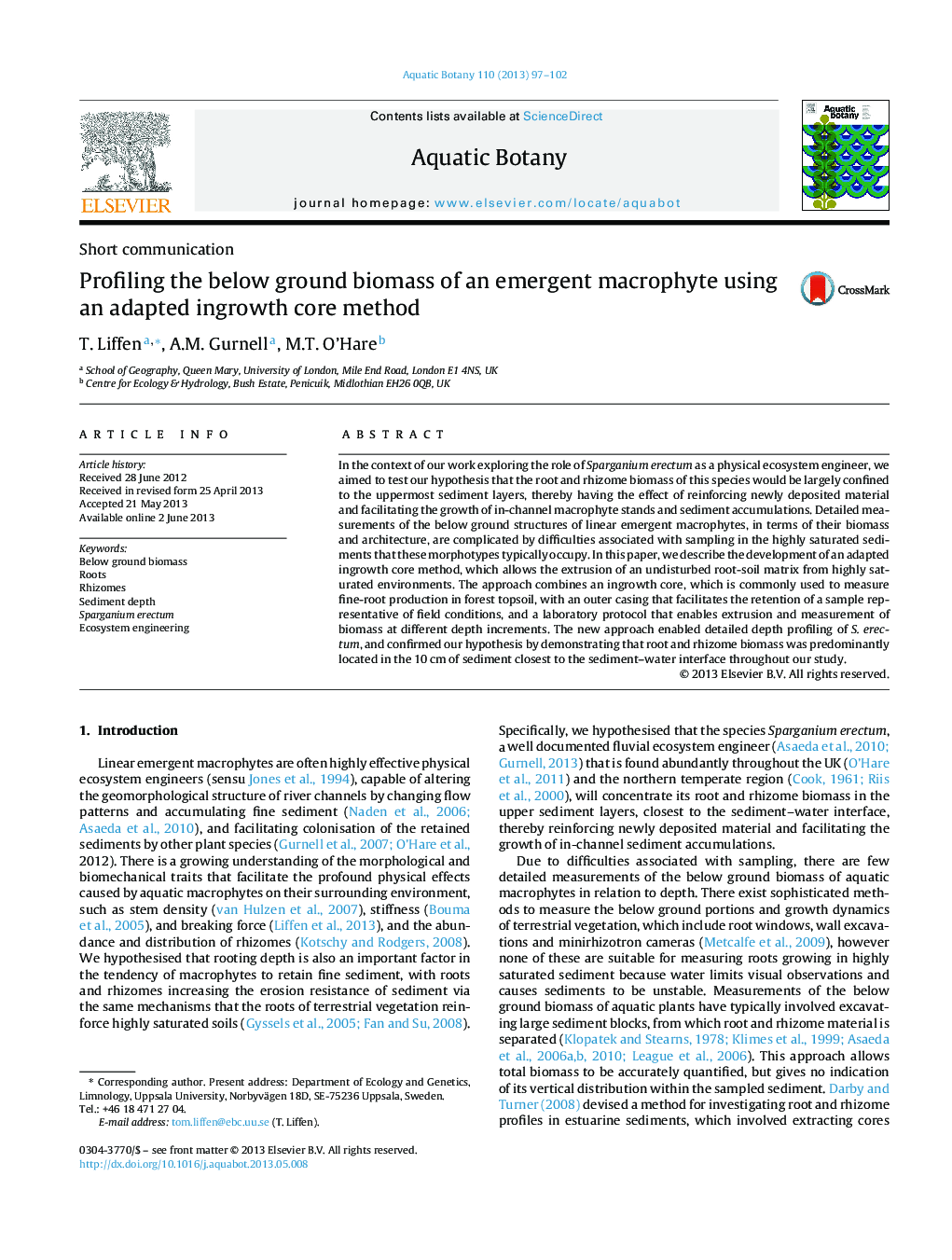| کد مقاله | کد نشریه | سال انتشار | مقاله انگلیسی | نسخه تمام متن |
|---|---|---|---|---|
| 6381772 | 1625832 | 2013 | 6 صفحه PDF | دانلود رایگان |
- An ingrowth core was developed to profile the distribution of root/rhizome biomass for the species Sparganium erectum.
- Below ground biomass was concentrated in the uppermost 10Â cm of sediment.
- Rhizomes were distributed more evenly through time and depth.
- Root biomass peaked in June to August and disappeared in winter.
In the context of our work exploring the role of Sparganium erectum as a physical ecosystem engineer, we aimed to test our hypothesis that the root and rhizome biomass of this species would be largely confined to the uppermost sediment layers, thereby having the effect of reinforcing newly deposited material and facilitating the growth of in-channel macrophyte stands and sediment accumulations. Detailed measurements of the below ground structures of linear emergent macrophytes, in terms of their biomass and architecture, are complicated by difficulties associated with sampling in the highly saturated sediments that these morphotypes typically occupy. In this paper, we describe the development of an adapted ingrowth core method, which allows the extrusion of an undisturbed root-soil matrix from highly saturated environments. The approach combines an ingrowth core, which is commonly used to measure fine-root production in forest topsoil, with an outer casing that facilitates the retention of a sample representative of field conditions, and a laboratory protocol that enables extrusion and measurement of biomass at different depth increments. The new approach enabled detailed depth profiling of S. erectum, and confirmed our hypothesis by demonstrating that root and rhizome biomass was predominantly located in the 10Â cm of sediment closest to the sediment-water interface throughout our study.
Journal: Aquatic Botany - Volume 110, October 2013, Pages 97-102
